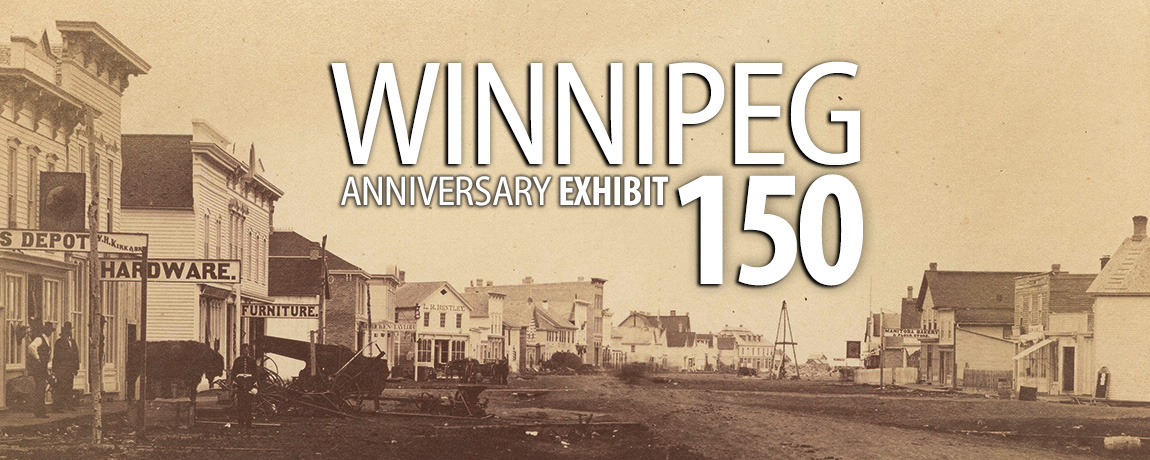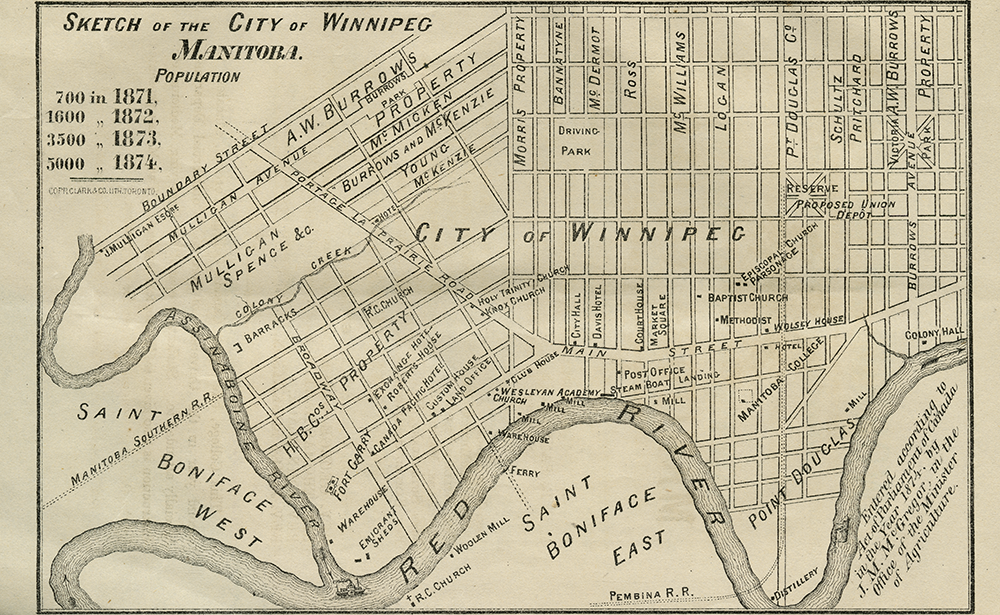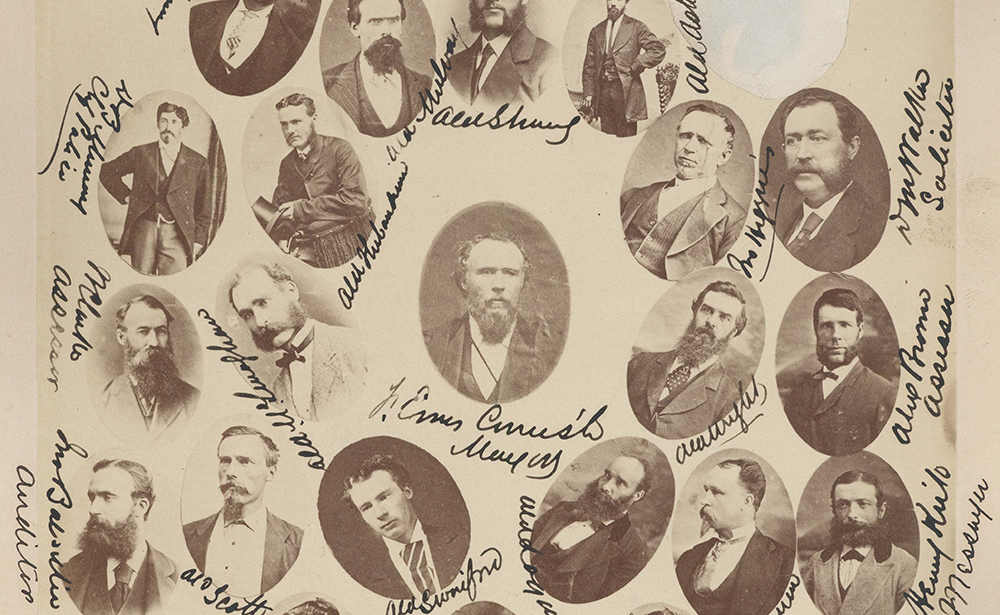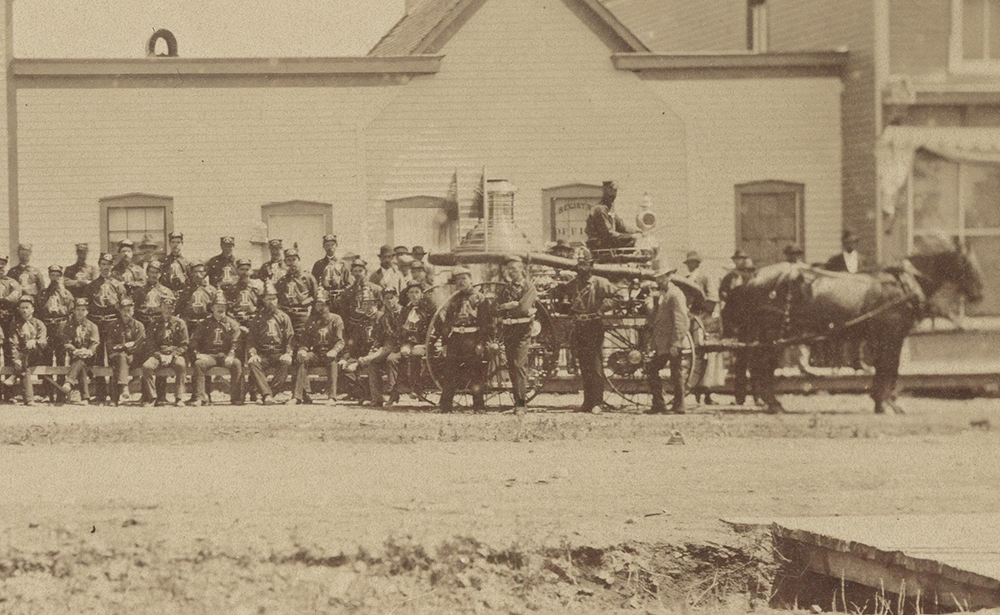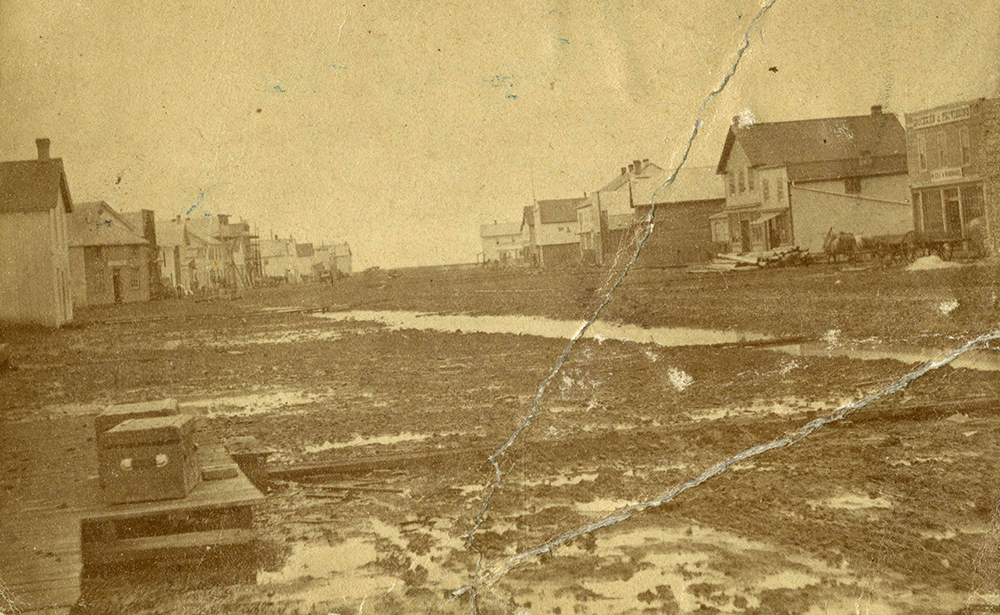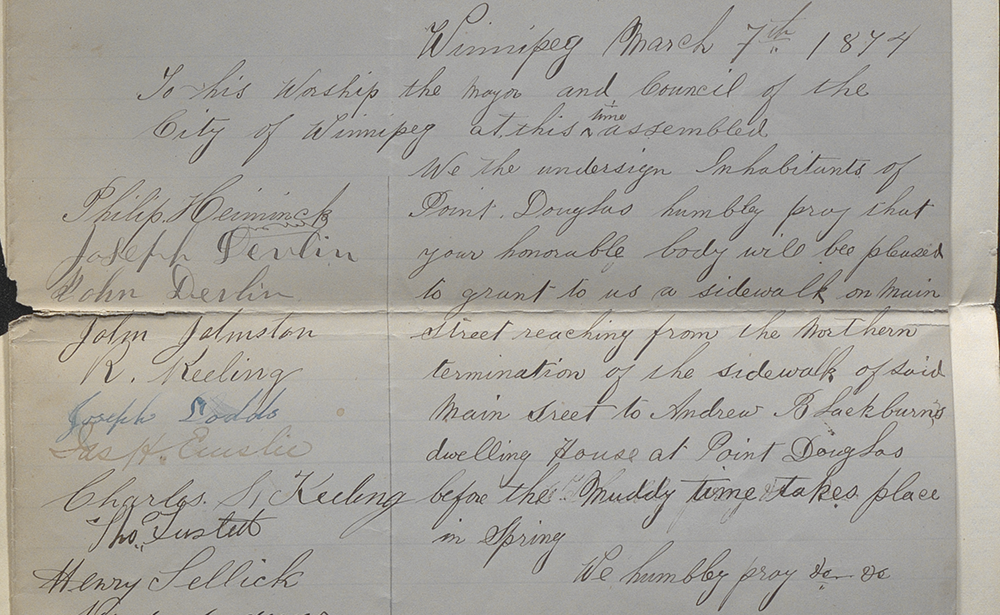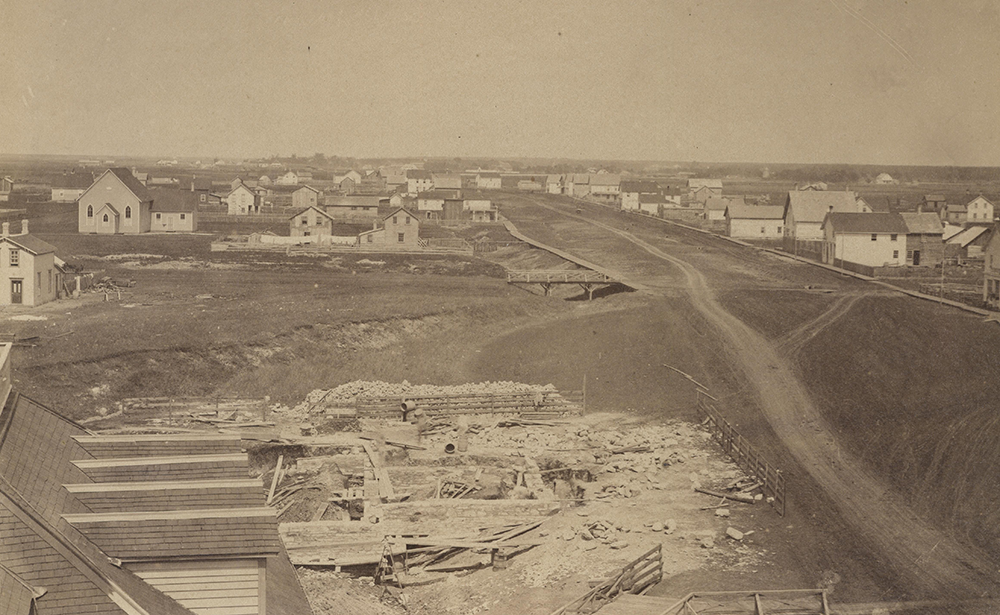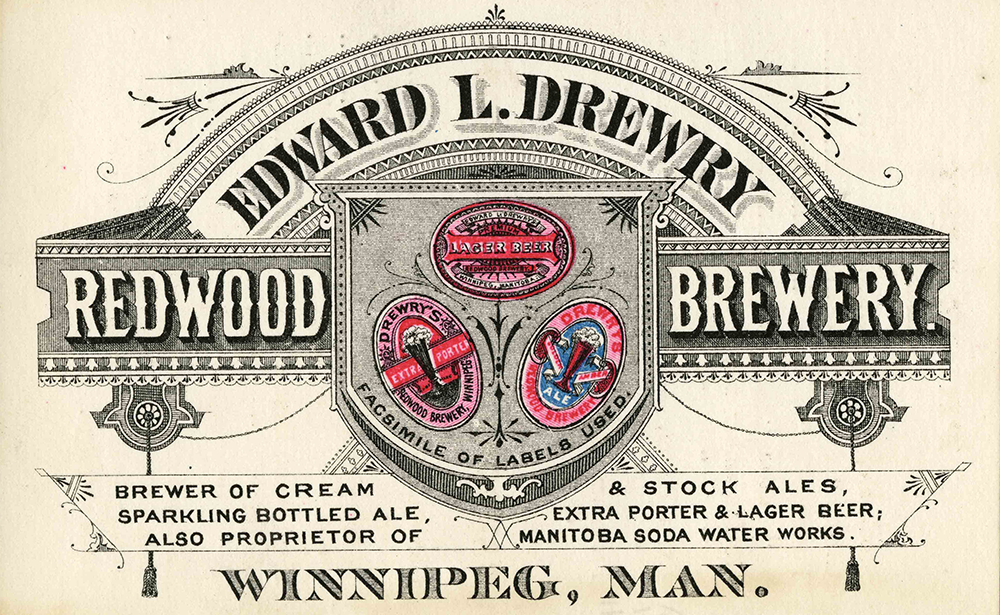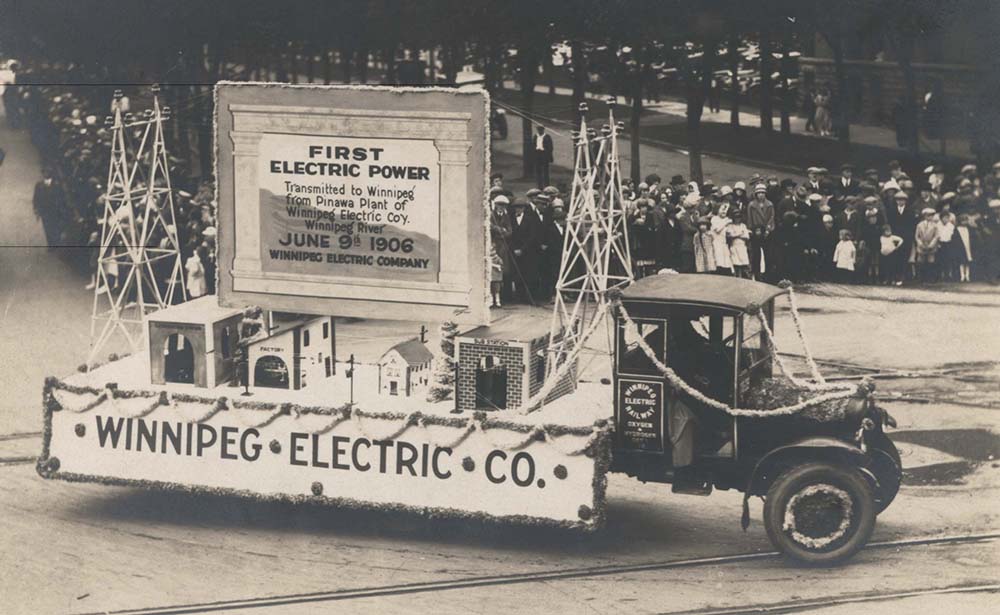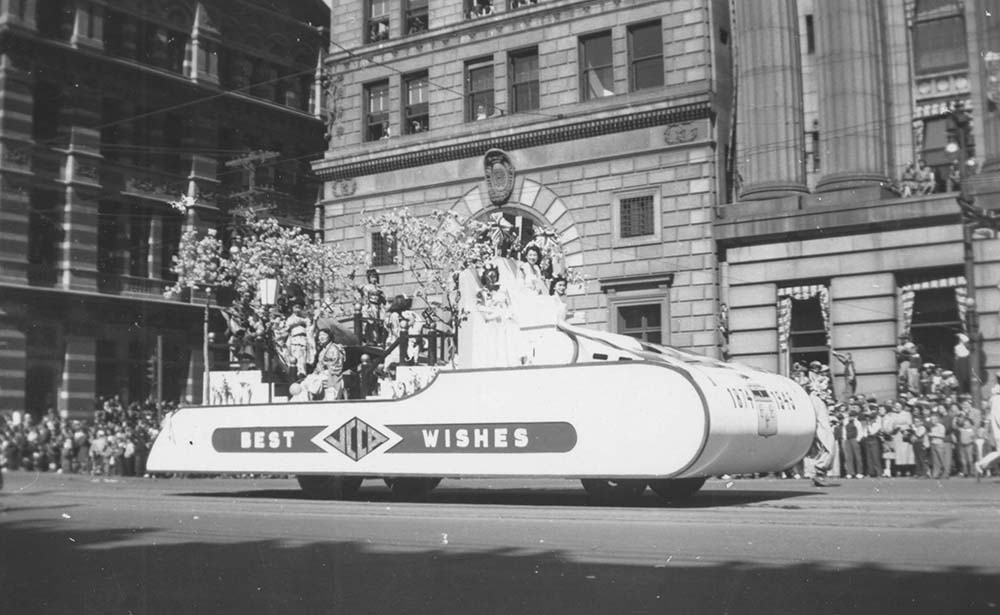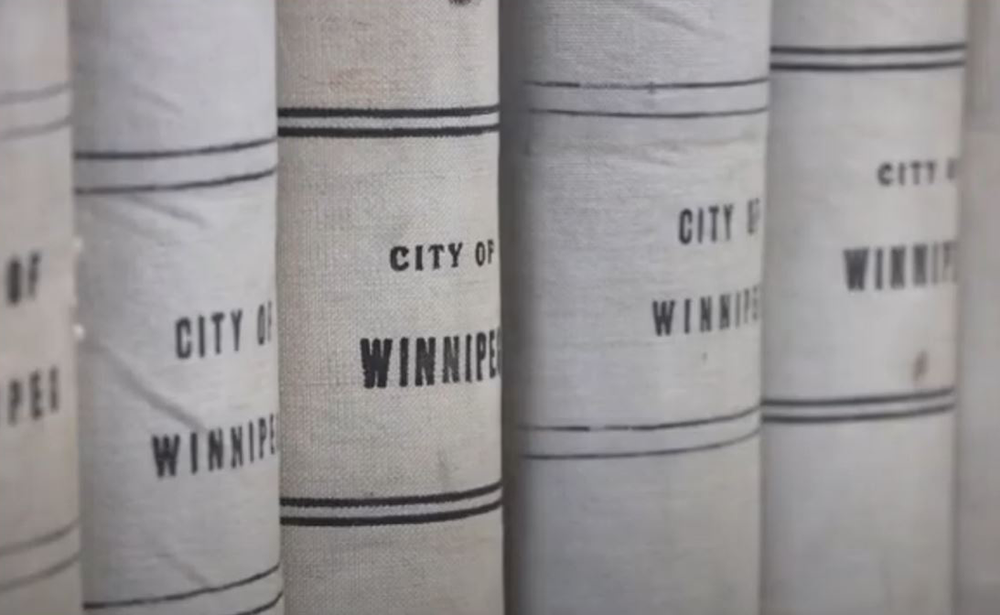Part of Treaty One Territory, the home and traditional lands of the Anishinaabe (Ojibwe), Ininew (Cree), and Dakota peoples, and the National Homeland of the Red River Métis, Winnipeg has long been an important place for community and gathering as well as a commercial, transportation, and cultural hub. In 1862, several stores opened in the unincorporated village of Winnipeg, which emerged from within the Red River Settlement. The population of the village grew quickly, and residents pressed the Manitoba Legislature for incorporation. On November 8, 1873, the Legislature passed An Act to Incorporate the City of Winnipeg, officially making Winnipeg a city and adopting its name. The first election was held on January 5, 1874 and the first City Council meeting took place on January 19, which is why the City has historically commemorated 1874 as its anniversary year.
This exhibit highlights records held by the City of Winnipeg Archives related to Winnipeg’s early years as a city. The City of Winnipeg Archives is the official repository for the records of the City of Winnipeg, which include Council minutes and communications, by-laws, election records, committee files, property assessment records, and photographs. This exhibit identifies key topics within these records and encourages further discovery of the City’s archival collection.
Not all people who shaped Winnipeg’s history appear in these records. Some records can tell us much about City Council’s decisions and Winnipeg’s development as a city, but reveal less about how people living in Winnipeg experienced and responded to social, economic, and political changes. It is important to recognize that settler use and ownership of land displaced Anishinaabe, Ininew, and Dakota peoples, and the Red River Métis. We acknowledge the history and legacies of colonialism and commit to the ongoing process of reconciliation within and outside the Archives.
Winnipeg's 150th anniversary year is centered on "Our shared stories. Our shared future". Over the coming year, we invite you to seek out more records and stories, to explore Winnipeg’s archives, museums, and heritage centres, and perhaps more importantly, to listen to the stories being shared. This is how we chose to commemorate Winnipeg 150.
Decision Making
City Council is the primary decision-making body of the City of Winnipeg. The first City Council consisted of a Mayor and 12 Aldermen (known today as Councillors), three from each of the city’s four electoral wards. City Council was responsible for passing by-laws, confirming appointments, making and passing resolutions, and enacting other high-level decisions. Aldermen also formed standing committees, such as the Market Committee and the Fire and Water Committee, as well as special committees to deal with specific issues, such as the Special Committee on Appointments.
Records with information on this subject:
Council minutes: the official records of City Council proceedings and decisions.
By-laws: municipal laws passed or amended by City Council.
Standing committee files: minutes, communications, and reports created or received by standing committees.
Special committee files: reports and communications created or received by special committees.
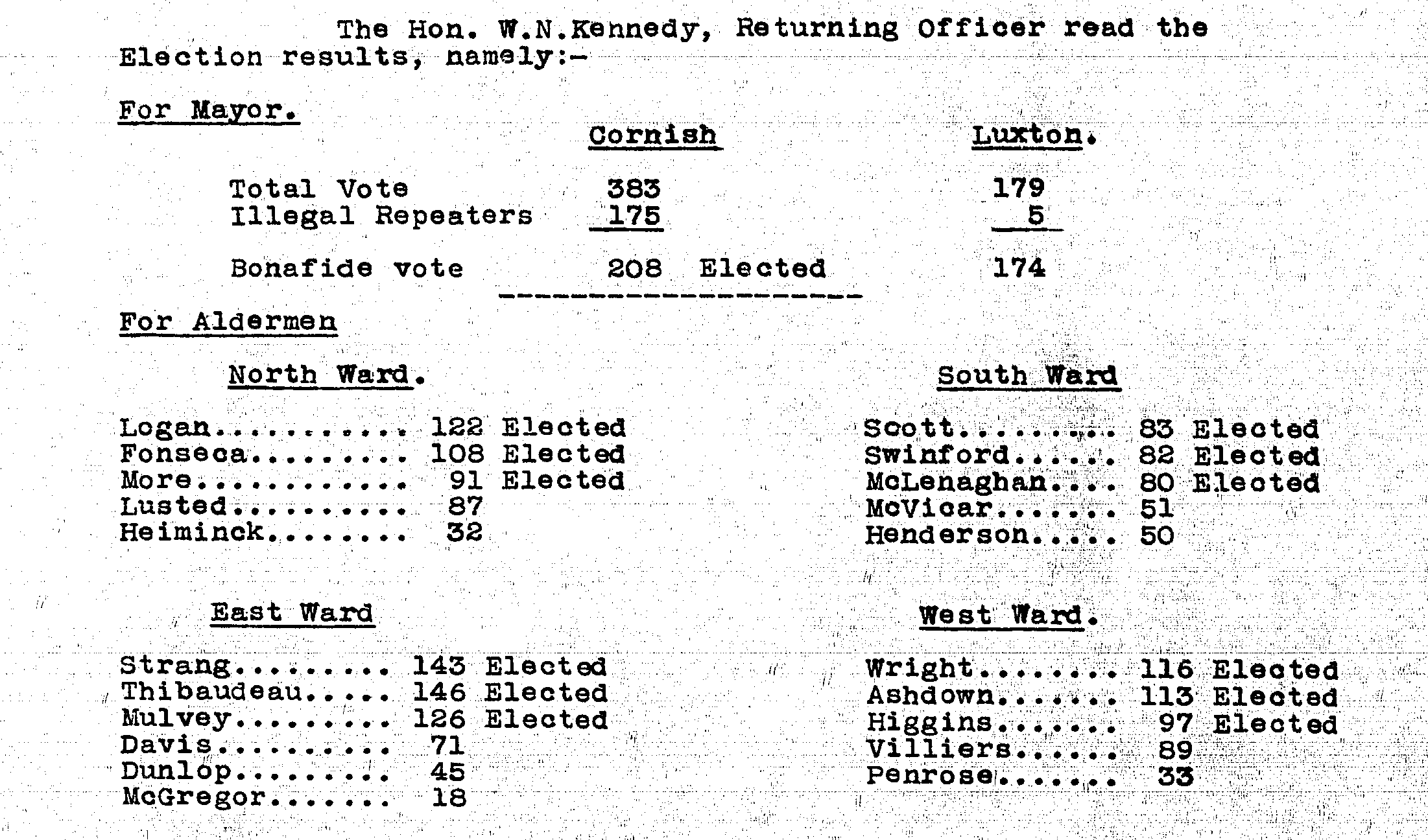
Results of Winnipeg's first City Council election on January 5, 1874. Winnipeg City Council minute books (1/1874).
Elections
Winnipeg’s first City Council election took place on January 5, 1874. To be eligible to hold office, candidates were required to be male freeholders (someone who owns property) or householders (someone who occupies property), British subjects, at least 21 years of age, and had to have resided in the city for at least three months. In order to vote, residents had to meet similar criteria and had to own property valued at $100 or to pay at least $20 per year in rent.
Records with information on this subject:
Election records: consist of nomination forms, the results for the 1874 election in West Ward, and a brief history of civic elections from 1874-1937.
Statutory declarations: oaths of office signed by Mayor Francis Cornish and City Clerk A.M. Brown in 1874.
Cornerstone casket, 1875: a time capsule that was placed in the cornerstone of Winnipeg’s first city hall in 1875. Contains voters lists for Winnipeg’s first two elections.
Access to municipal services was a major driving force behind the city’s incorporation and some of the first actions taken by City Council were to fill municipal positions, including fire fighters and police, auditors, the City Clerk, the City Engineer, assessors, and tax collectors. These officials and their staff performed various functions for the City and provided services to residents, such as policing, garbage removal, and sidewalk construction.
Records with information on this subject:
Council minutes: contain decisions made by City Council on appointments, salaries, and finances.
Council communications: contain applications to City Council for positions such as City Clerk and Chief of Police, as well as reports and other information provided by City staff. Also contain letters from residents commenting on City staff and City services.
By-laws: relevant by-laws include those that appointed City staff and officials and those that defined the scope of their responsibilities.
Special Committee on Appointments: communications of a committee established in 1874 to make recommendations on staff appointments for the City’s first year.
Photographs: photographs of some early City officials can be found in the Cornerstone casket, 1875 and the Cornerstone casket, 1884 series and the City of Winnipeg Archives Photograph collection.
At the time of incorporation, Winnipeg consisted of about five square kilometers. The city’s southern and eastern boundaries were marked by the Red and Assiniboine rivers. Present-day Maryland Street, Notre Dame Avenue, and McPhillips Street marked its western limits, while Burrows Avenue west of Main Street and Aberdeen Avenue east of Main Street defined its northern boundary. It was made up of large estates, smaller residential and commercial buildings, and Hudson’s Bay Company reserve land. A contemporary account estimated that in 1874 Winnipeg consisted of around 900 buildings, being built most rapidly north of what is now William Avenue. The streets were largely unpaved and often muddy, and residents frequently petitioned City Council to install wooden sidewalks and other infrastructure.
Records with information on this subject:
Council and committee records: contain minutes documenting City Council’s decisions related to construction and other projects, as well as petitions and letters from residents about sidewalks, street maintenance, and other public works projects.
By-laws: relevant by-laws include those that affected and regulated city infrastructure and privately-owned buildings.
Assessment records: books containing the assessed values of buildings and properties within the city for tax purposes.
Photographs: photographs of early buildings, streets, and other infrastructure can be found in the 1875 cornerstone casket, the City of Winnipeg Archives Photograph collection, and the Morris Block collection.
Property and Business
In 1874, Winnipeg was made up of small businesses and industries like breweries, hotels, hardware stores, grocers, and saloons, as well as agricultural land and residences, most of which were subject to property taxes collected by the City.
Records with information on this subject:
Council and committee records: contain minutes documenting City Council’s decisions related to property, taxes, and business, as well as letters from residents about these decisions, requests for business licenses, and files from the Market Committee.
By-laws:relevant by-laws include those that affected taxes, assessed values, and properties.
Assessment records: books containing the assessed values of buildings and properties within the city for tax purposes, as well as some demographic information about tax-payers.
Cornerstone caskets (1875 and 1884): time capsules that were placed in the cornerstones of Winnipeg’s first two city halls in 1875 and 1884. They contain voters lists for Winnipeg’s first two civic elections and businesses cards from around 1884.
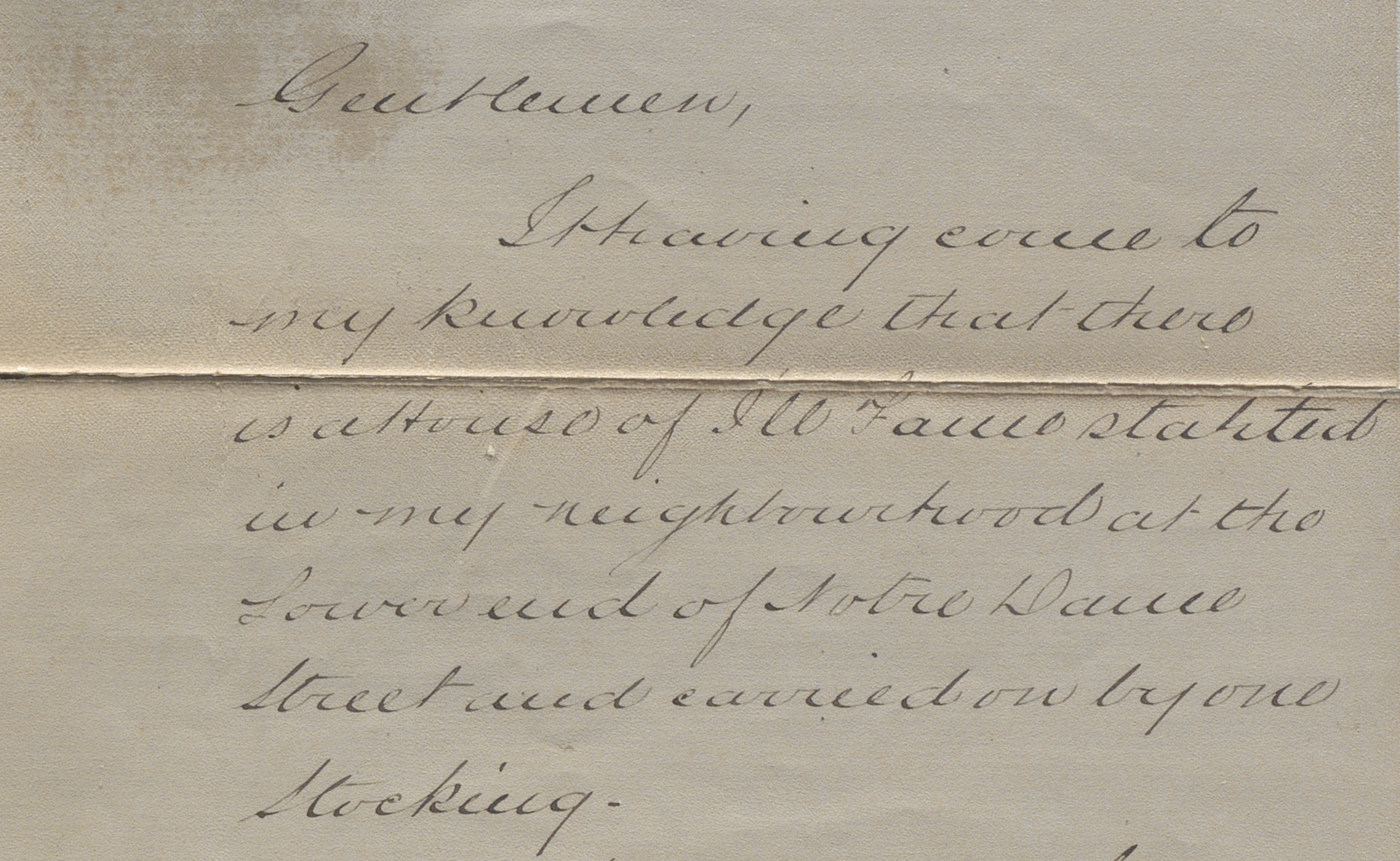
Excerpt from a letter sent to Council complaining about a "House of Ill Fame", 1874. City of Winnipeg (1874-1971) fonds. Council communications (File 55).
Engagement with Civic Government
In addition to writing to City Council about business regulations and taxes, residents wrote about everything from “houses of ill-fame”, to trash and debris pickup, to the installation of sidewalks and the opening of streets.
Records with information on this subject:
Council communications: contain letters and petitions sent from residents directly to City Council about various topics and expressing various concerns.
Council minutes: contain responses from City Council to petitions and other letters from residents.
Winnipeg and its residents celebrated previous anniversary milestones with large events and ceremonies. Major celebratory events such as parades featuring floats by local businesses and organizations were held in 1924 for the 50th anniversary and in 1949 for the 75th anniversary. For the City’s 100th anniversary in 1974, the City celebrated with historical re-enactments, festivals, and community events throughout the year.
Records with information on this subject:
City of Winnipeg Archives Photograph collection: contains photos of anniversary parades and events.
Morris Block collection: contains photos of the 50th anniversary parade in 1924.
Special committee records: special committees were established to coordinate anniversary celebrations for both 1924 and 1949. A related series contains a photo and newspaper scrapbook of the 50th anniversary parade in 1924.
Council Minutes: contain decisions made by City Council related to anniversary planning and events.
On February 9, 1874, City Council instructed the City Clerk – appointed earlier that day – to “obtain a cupboard to contain the Corporation papers”. On January 18 of the following year, City Council authorized the City Clerk to get “two or more tin or sheet iron boxes to hold papers and documents for the year 1874”. These papers and documents are still held and preserved by the City of Winnipeg Archives and are invaluable resources for learning more about the early years of Winnipeg and its municipal government. It is important, however, to remember that most of these records were created by and for City officials in the course of their duties. We invite researchers to reflect on the absences and biases in these records and to consult other sources to gain a more complete understanding of Winnipeg’s early years as a city.
The following list of records is not comprehensive. We encourage use of the finding aids and collection descriptions on Winnipeg in Focus to assist with identifying records and to contact the Archives. Note that there may be restrictions on access to fragile records.
Council minutes: the official records of the proceedings of City Council.
Council communications: correspondence sent to City Council by residents, City departments, and others about a variety of topics.
Standing committee records: reports, communications, and minutes of the City’s standing committees, such as the Market Committee, the License and Police Committee, the Finance Committee, the Fire and Water Committee, and the Board of Revision.
Special committee records: correspondence sent or received by various special committees, including the Special Committee on Appointments (1874), the Special Committee on City Map (1875), and the Special Jubilee Committee (1923-24). Minutes exist for some special committees, but do not go back to the 1870s.
By-laws: municipal laws and amendments passed by City Council that included regulations, appointments, and the management of finances.
Election records: records related to civic elections, including letters and petitions from residents nominating candidates and some election results.
Statutory declarations: oaths of office signed by City Councillors and officials.
Assessment records: books containing the assessed values of buildings and properties within the city for tax purposes, as well as some demographic information.
Cornerstone caskets: time capsules that were placed into the cornerstones of Winnipeg’s first two city halls, the first in 1875 and the second in 1884. Contain photographs of Winnipeg and civic officials, booklets and papers, early voters lists, business cards from local business owners, and even the remains of an extinct species of grasshopper.
City of Winnipeg Archives Photograph collection: contains photographs collected from a variety of sources, both from private donations and from City departments.
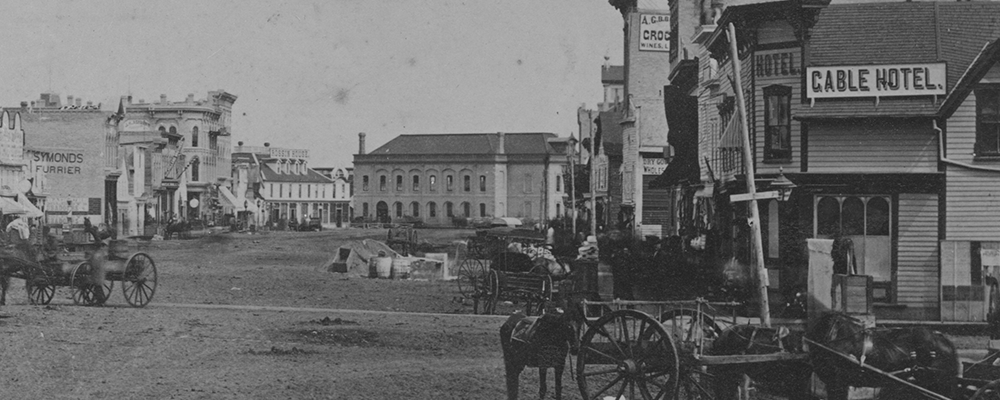
Main Street looking north towards Winnipeg's first city hall (centre), circa 1880. City of Winnipeg Archives Photograph collection (P4 File 4).
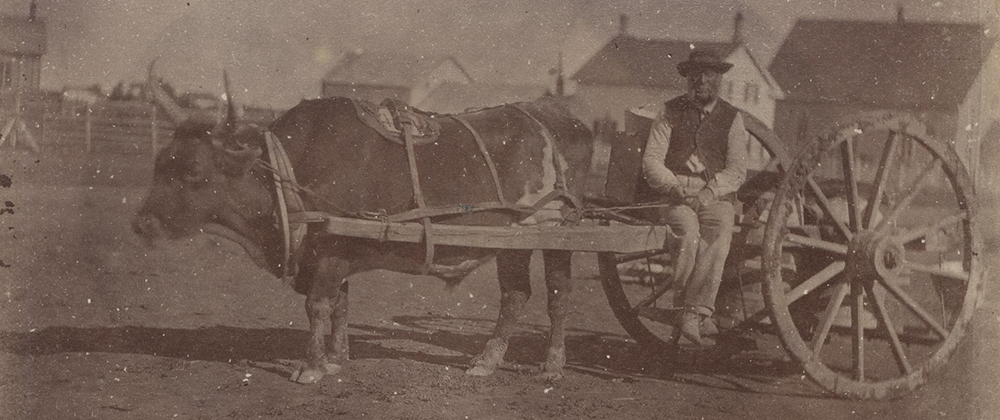
Winnipeg Water Works ox cart, 1871. City of Winnipeg (1874-1971) fonds. Cornerstone casket, 1875 (A569 File 1 Item 16).
Other Resources
Archives of Manitoba and the Hudson's Bay Company Archives
Association of Manitoba Museums
City of Winnipeg, Heritage Conservation
City of Winnipeg, Pathways to Winnipeg History
City of Winnipeg Public Library
City of Winnipeg Public Library, Indigenous-related topics info guide
City of Winnipeg, Rooster Town
City of Winnipeg, Transit History
Louis Riel Institute, Legislative Assembly of Manitoba
Louis Riel Institute, The Reign of Terror Against the Métis of Red River
Manitoba Indigenous Reconciliation and Northern Relations, The Legislative Assembly of Assiniboia
Norma Hall, Clifford P. Hall, and Erin Verrier, A History of the Legislative Assembly of Assiniboia


